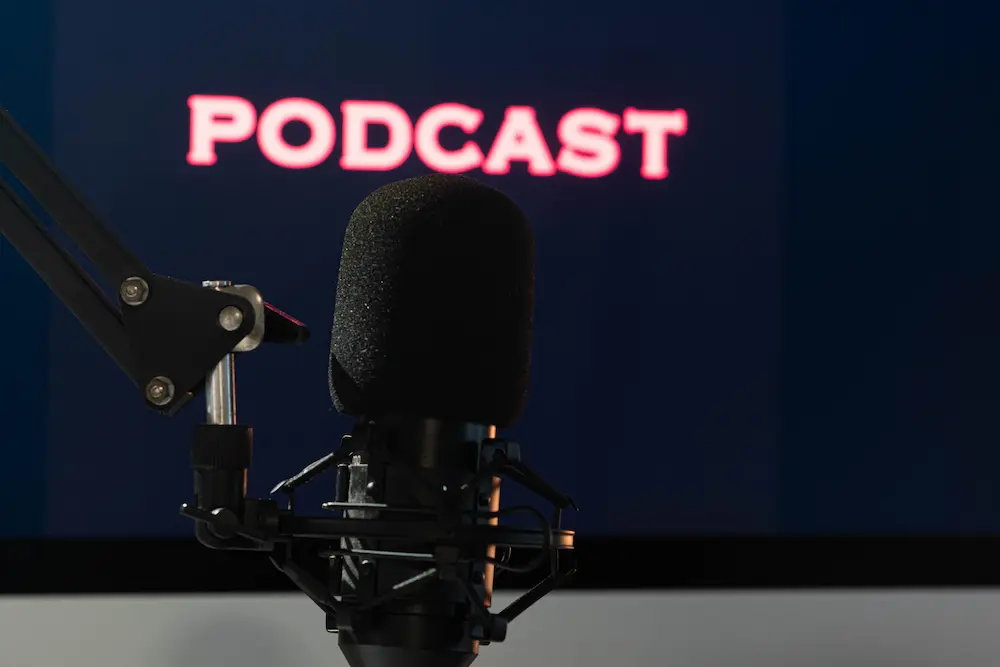
11 Microphone Technique Secrets for Podcasts
Get it right and deliver a stellar vocal sound
So you booked a recording session at a PodSpot or you're recording one from home. Whatever the case, here are 11 tips to help you nail the best possible performance and sound.
1. Stay hydrated.
I’m tempted to make this the first three rules. Bring plenty of water. If you run out of water, don’t be afraid to pause the session and get more. A little bit of water will make your words flow smoother and lessen mouth noise (this will also save time in editing). Apple juice or other acidic drinks are great for killing mouth noise, too.
2. Stay a good, consistent distance from the mic.
Find the sweet spot. Don’t be too far or too close to the mic. A good rule of thumb is to stay 2-4 inches away from dynamic mics, and 6-12 inches away from condenser mics. The most important thing, though, is to try and stay a consistent distance from the mic once you find the right spot.
3. Wear headphones.
...and raise them to a level that you can hear yourself, but that the volume isn’t distractingly loud. Wearing headphones will allow you to self-regulate your own volume and it will keep you from getting too far or close to the mic. The best part is this is mostly an instinctual effect. You will drastically improve your performance without even thinking about it.
4. Don’t eat nuts, chips or popcorn.
Crumbs from these foods, and grainy foods like this, will stick to your teeth. This leads to dry mouth, lip smacking and clicky mouth noises. Alternatively, if you must snack on these types of food, drink a lot of water to compensate.
5. I’m not going to tell you not to drink coffee, but...
Yes, coffee will dry your mouth out, which isn’t ideal. But I understand there are non-aural advantages which coffee provides. Instead, I will say if you drink coffee, then drink extra water to compensate for the inevitable dry mouth noises.
6. Bring notes.
Have either an outline or a list of topics you want to touch upon with you. Don’t overdo it and find yourself reading a script, but have something you could glance down at to nudge you in a new direction when needed.
7. Position the mic slightly off axis.
Don’t go crazy, though, the trick is to just create a slight angle. This is because speaking directly into the mic (on axis) will cause “plosives”, or “popping P’s and B’s”. Alternatively, these popping plosives can be mitigated by using a “pop filter”.
8. Distance control (advanced).
As a corollary to #2, advanced podcasters will learn to instinctively move back slightly from the mic when they are going to really raise their voice (or laugh) and to creep closer to the mic when they are lowering their voice for effect. This is something that comes with time, familiarity and practice. (For a treat, watch a singer like Al Green work a microphone. How he pulls away and closer to deliver a consistent volume. It’s a thing of beauty)
9. Don’t touch the mic or bang on the table.
Some of us like to talk with our hands. Especially when we get excited. Some of my favorite guests on the Angel Invest Boston Podcast were hand talkers. Banging on tables, touching the mic and even waving their hands in front of their face (and the mic). These things don’t work to accentuate a point in the audio-only medium of podcasting. And they will drive your mixing engineer crazy.
10. If you want to get fancy, drink an ounce of juiced ginger.
Especially if you feel soreness or a tickle in your throat. This is an old vocal coach trick. It really clears your throat and sinuses (Warning: it will burn going down). An ounce of juiced cranberry juice or lemon help with energy, too.
11. Don’t Overthink It.
Try to relax. The best way to work with all these rules is read them between sessions and not to sit there trying to follow them during a session. Once you get a few sessions under your belt, a lot of this will come naturally. And if you stress yourself out trying do it perfectly the first time, the performance will suffer. A loose and free performance that follows none of these rules will always be better than a tight and forced performance that checks every one of them.